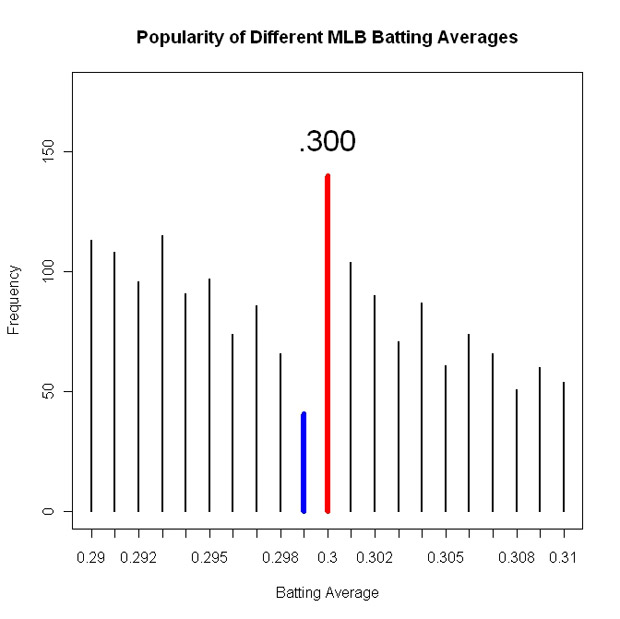In the sport of baseball, the traditional method of measuring batting performance is the batting average defined by the number of hits divided by the number of opportunities. Generally, a .300 batting average is thought to be a benchmark for hitting quality and players really desire a season batting average exceeding .300.
In a recent New York Times article Alan Schwarz talks about research by several University of Pennsylvania professors about the psychological importance of hitting .300.
This phemomena can be demonstrated by looking at the season batting averages of all baseball hitters in the past 50 seasons. I collected the batting averages for all regular players since 1960 who had at least 300 opportunities to bat. For each player, I rounded the batting average to three decimal spaces as commonly done in professional baseball. The figure displays a line graph of the frequencies of the batting averages between .290 and .310.

This graph shows the importance of the .300 mark in baseball. Batting averages slightly smaller than .300 are unlikely but a batting average of .300 is very likely. Athletes might like to say that the performance statistics are not important, but there are patterns in this data that suggest otherwise.
One of the most famous baseball players in history was Mickey Mantle who was a star when I was growing up. In his last season, Mantle had difficulty hitting due to injuries and his batting average was .237, dropping his career batting average to .298. The fact that his career average dipped below was supposedly Mickey Mantle "biggest regret" in his baseball career.




